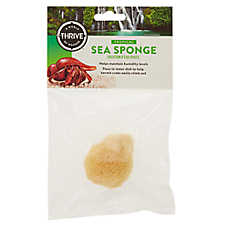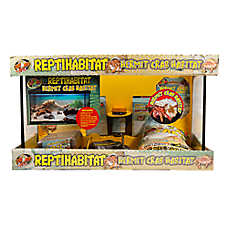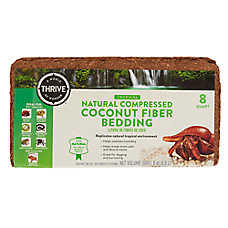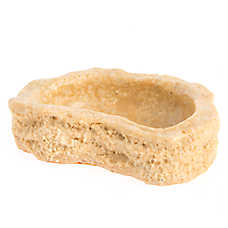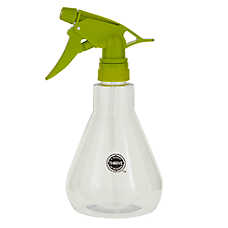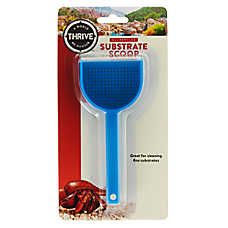Hermit Crab Care Guide
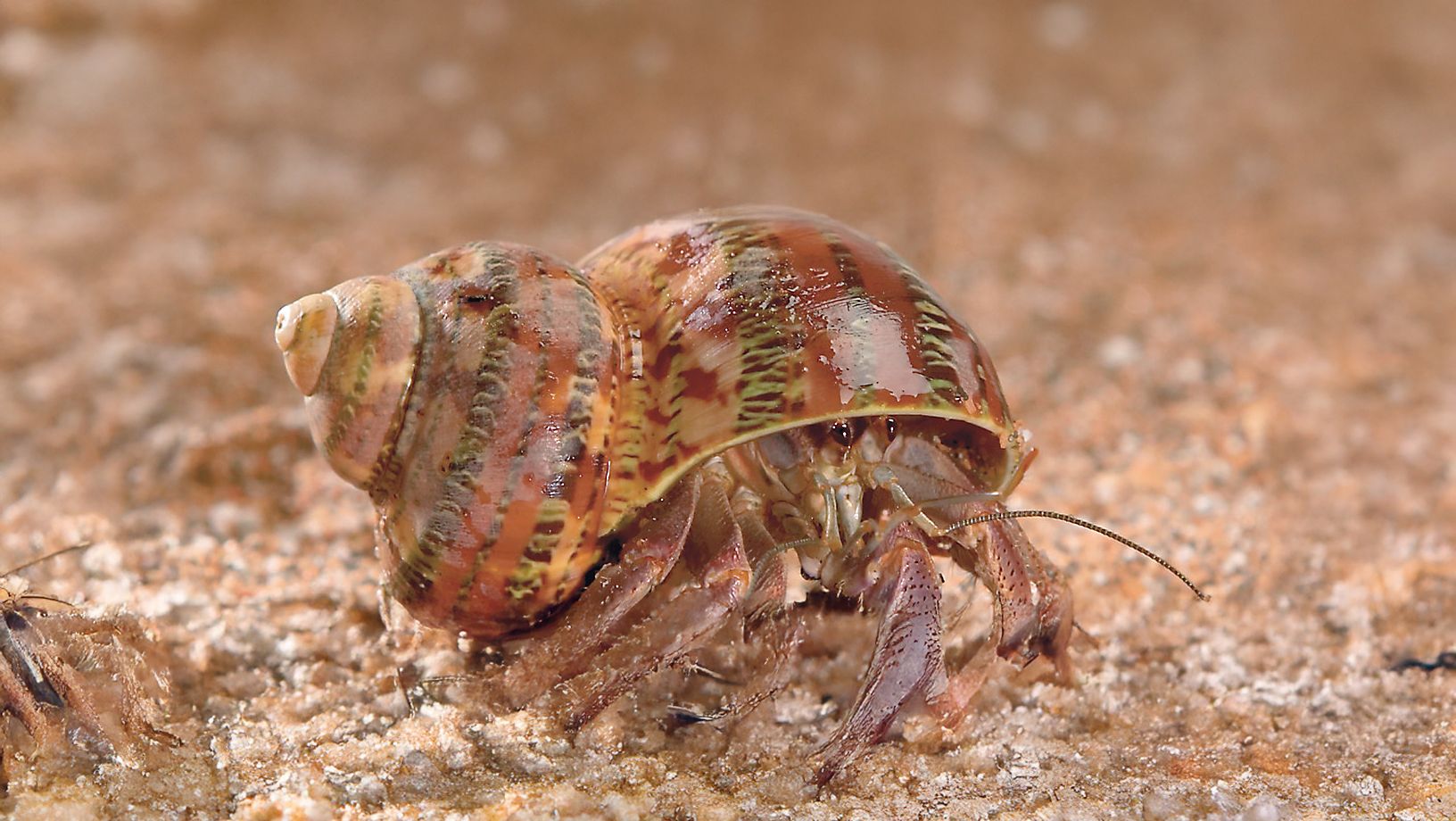
In this Article
Long-lived and Interesting
Hermit crabs are popular pets with their unique behaviors and interesting activities. These crabs make great long-lived pets! In addition to the crabs, their terrarium can be decorated with live plants or fun decorations to make a fun and interesting habitat for you and your crabs!
Size: Hermit crabs average around 2” to 3” but can grow up to 6”
Lifespan: Typically, 10-20 years, but more than 40 years has been documented!
Behavior: Although hermit crabs live near water, they spend most of their time on land. They like to explore and forage for food, as well as socialize. Despite being “hermit” crabs, they live in community groups and are quite social! In the wild, hermit crabs have been known to live in colonies of 100 individual crabs! While we do not recommend getting that many, we do suggest keeping at least 3 hermit crabs together so they can be social and express some of their natural behaviors together.
Hermit crabs are curious, and inquisitive about their environment. Providing them with décor that they can explore including rock, driftwood, and artificial plants makes an interesting habitat for you and your crabs!
Hermit crabs have a unique approach to finding shelter. Each hermit crab will find a shell that it finds appealing and when it outgrows that shell, will find a new shell home. It is very important to offer a variety of shells in different sizes with different appearances to give your hermit crab the chance to find a new home it likes.
Like many crustaceans, hermit crabs shed their exoskeletons as they grow in a process called molting. During this time, they will burrow into the soil in their habitat, leave their comfortable shell, and shed their exoskeletons. It is very important not to disturb them during this time as their bodies are soft and easily injured. Once the molting process is complete, your crab will come back to the surface and typically spend a lot of time eating and drinking. They may change into a larger shell after their molt.
Temperament: While hermit crabs can be handled and held carefully, this is very stressful for them and it is not recommended to regularly hold them. Some crabs are very active in the daytime but they are primarily nocturnal and will be most active at night. Hermit crabs should be housed in groups of 3 or more depending on how much space you can devote to them.
Types of Hermit Crab: With the Assorted Hermit Crab at PetSmart, there are several hermit crabs that you may find. The most common is the Purple Pincher, Coenobita clypeatus, which is the most common hermit crab in the US and the only hermit crab available at Canadian PetSmart locations. Another is Coenobita rugosus, the Tawny Hermit Crab or Ruggie, these are the most popular hermit crab in Asia. Less common but possible are the Strawberry Hermit Crab, Coenobita perlatus, the Viola, Coenobita violascens, and the Indo or Brevi, Coenobita brevimanus.
All of these species can live together and tolerate an overlapping range of temperature and humidity.
Diet
Hermit crabs are sensitive to metal – make sure their food & water bowls are ceramic or another non-metal, non-porous material. Additionally, hermit crabs mostly feed at night, so offer them food in the evenings then remove leftover food in the morning to ensure habitat cleanliness.
PELLETED FOOD: For smaller crabs that cannot pick up pelleted food, feed 1 teaspoon of crushed pellets or powdered food
FRESH GREENS & FRUITS: Feed your crab a variety of dark, leafy vegetables such as kale or broccoli, and fresh or dried fruits such as apples, grapes, or bananas. Hermit crabs are sensitive to pesticides so take care to wash your produce prior to offering it or be sure to carefully source your produce.
PROTEIN SOURCES: Hermit crabs love freeze-dried insects, single protein treats like freeze dried shrimp or krill, and unseasoned, cooked proteins like scrambled eggs or cooked chicken.
CALCIUM SOURCES: To make that hard exoskeleton, hermit crabs need lots of calcium. You can offer powdered reptile calcium (without Vitamin D), cuttle bones, or cooked shrimp or lobster exoskeleton.
FATS: Like all animals, fat provides important fuel for hermit crabs, and they enjoy being offered a few drops of salmon oil or cold pressed, organic seed oils a couple times a week.
WATER: Hermit Crabs are unique in that they need access to two different types of water. One bowl should have dechlorinated freshwater while the other must have saltwater. Hermit Crabs live near the ocean and regularly go into both fresh and saltwater. The bowls must be deep enough that the crabs can fully submerge their bodies, including their shells. Make sure crabs can get in and out of these bowls with ease.
For saltwater, you can make your own using Instant Ocean Marine salt and dechlorinated water. A Hydrometer is important to check the salinity of the saltwater. For your hermit crabs, add 35g of salt per liter of water. A small scale makes this easier!
Hermit CRABitats
Important notes: Hermit crabs have modified gills but cannot breathe underwater. These gills means that hermit crabs require a humidity of 80-85%. They also mean that hermit crabs can drown if they cannot easily get out of their water bowls.
Habitat Setup: Creating a Safe and Enriching Environment
- Tank: House your hermit crabs in a terrarium that has 10 gallons of space for every 2-3 smaller crabs. As they molt and grow, or as you add more crabs, you will need to increase the tank size. Ultimately, for jumbo crabs, you’ll need 20 gallons of space per crab. When choosing a tank, remember that you’ll need to add 6” of substrate to the bottom
- Substrate: Line the bottom of the terrarium with a mixture of sand and coco coir, between 3 to 5 parts natural sand to 1 part coconut coir to mimic their natural coastal habitat. Avoid calcium carbonate sand, which can compact and cause injury, and never use potting soil that may contain harmful fertilizers or pesticides. Use organic, chemical-free substrates, when possible, to keep your crabs safe and healthy.
- The substrate mix should be 3-4X deeper than the height of your largest crab, with a minimum of 6 inches although again jumbo crabs will need 14”. (The depth of soil is most important when your crab is molting.)
- Enrichment and Hiding: Create several hiding places in the habitat and add at least 3-5 empty shells per crab to use as future housing. Do not offer painted or decorated shells as paints and decorations can harm your crabs.
- Temperature and Humidity:
- A combination thermometer/hygrometer is needed to measure temperature and humidity.
- A safe temperature range for all land hermit crabs is 80-85° F (26-29° C).
- Under-tank heating pads can be used against the side or the back wall rather than underneath the tank as the thick substrate interferes with the heat rising from the bottom of the tank. You can also use a ceramic heat emitter attached to a thermostat to provide heat without disturbing the day/night cycle.
- Hermit crabs thrive in a humid tropical environment. Keep the humidity at 80-85% to allow your hermit crabs to breathe easily.
- To increase the humidity, you can add an air stone to your water reservoirs or use moist sphagnum moss to create a moss pit.
- If your crabitat is home to multiple species, reference the chart below for their individual temperature and humidity ranges. For mixed species habitats, it is generally recommended to maintain the tank at 80-85°F (24-29C) with 80-85% humidity, although higher humidity is always tolerated by the crabs, it can lead to increased mold in the tank.
Species | Temperature range | Humidity Range |
Aussie (Coenobita variabilis) | 80-90°F (25-32C) | 75-85% |
Ecuadorian (Coenobita compressus) | 80-90°F (25-32C) | 75-85% |
Indo (Coenobita brevimanus) | 75-85°F (26-29C) | 80-85% |
Purple Pincher (Coenobita clypeatus) | 75-85°F (24-29C) | 75-85% |
Strawberry (Coenobita perlatus) | 80-90°F (25-32C) | 80-85% |
Tawny (Coenobita rugosus) | 75-85°F (24-29C) | 75-85% |
Viola (Coenobita violascens) | 80-85°F (24-29C) | 75-85% |
- Lighting: Hermit crabs come from near the equator and should have a 12-hour light cycle followed by a 12-hour dark cycle. For general viewing, an LED fixture provides consistent, long-lasting lighting. Some studies have shown that hermit crabs can benefit from low levels of UVB light and access to UVB lighting is recommended.
- Water Access: Add two dishes—one with fresh dechlorinated water and the second with dechlorinated marine-grade saltwater. Both bowls should allow the crabs to enter and exit easily, while still being deep enough to fully submerge.
- If your terrarium includes hermit crabs of different sizes, use a rock, ramp or other decoration to allow all crabs to enter and exit safely.
- For saltwater, you can make your own using Instant Ocean Marine salt and dechlorinated water. A Hydrometer is important to check the salinity of the saltwater.
- Note: If you choose to use a natural sponge in your water dish, be sure you have multiple so you can change the sponge out and clean it daily, so it does not grow mold or excessive bacteria.
- For a more detailed guide on setting up a Hermit “Crabitat”, check out the Hermit Crab Habitat Guide.
When to see a vet
Contact your aquatic veterinarian if you notice the following signs:
- Decreased appetite or activity
- Staying outside of their shell
- Excessive molting
- Lost claws or limbs
- Strong odor from inside the shell
If you observe any of these symptoms, we recommend visiting the "Find a Fish Vet" tool at fishvets.org or wavma.org to locate a qualified aquatic veterinarian in your area.
Shopping List
- Glass or acrylic aquarium/terrarium
- Secure screen lid or hood with light
- Fixture and bulbs
- Thermometer and hygrometer
- Marine grade salt
- Water conditioner/dechlorinator
- Natural sand and coconut fiber or soil
- Food bowl and two shallow water bowls
- New spray bottle
- Wood, rocks or other décor (never use cedar or other evergreen wood as it irritates the crabs)
- Coconut huts, caves, or artificial plants for hiding
- 3-5 extra shells per hermit crab
- Prepared hermit crab food & cuttlebone
- Toys and enrichment items to climb on and investigate
- Ex: driftwood, crab-safe plants, coral pieces, unpainted clay flowerpots.
Ready to learn more? This guide is a great starting place, but we encourage you to do more research on the individual species that you are keeping so that you can be as successful as possible with your aquarium!
Need other fish supplies while you’re shopping for hermit crabs? PetSmart also carries fish food, tanks & aquariums, starter kits for fish, and water quality tests, as well as a variety of live fish such as goldfish, betta fish and koi and pond fish.
PetSmart offers convenient shopping with Curbside Pickup or in-store pickup. Need something today? We have select items available for Same-Day Delivery in most areas powered by DoorDash. For items you purchase frequently, PetSmart has Autoship that automatically delivers the items you want to your door as often as you’d like. Check the website to see which items are eligible.

